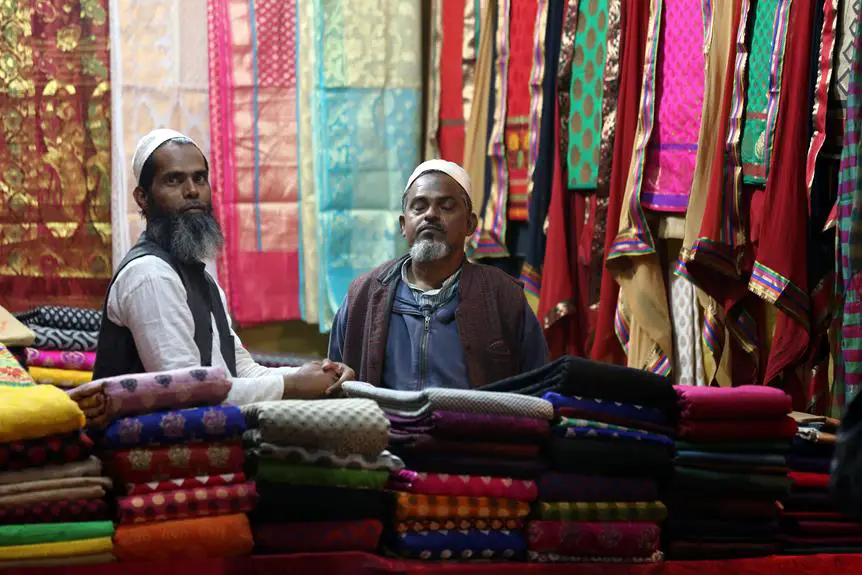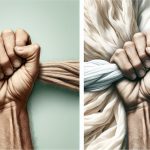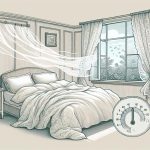Explore the intricate art of weaving with the finest fabrics.
Cotton, linen, wool, silk, bamboo, hemp, and Tencel offer exceptional qualities for your weaving projects.
Understanding the unique characteristics of each fabric will empower you to create masterful woven pieces.
Key Takeaways
- Cotton and linen are durable and versatile fabrics suitable for weaving, with a wide range of colors available.
- Wool and silk offer unique properties such as natural elasticity, insulation, breathability, and a smooth texture for weaving.
- Bamboo is a sustainable option with natural strength and minimal environmental impact, making it an eco-friendly choice for weaving.
- Hemp and Tencel are known for their durability, breathability, and versatility when blended with other fibers, contributing to sustainable and eco-friendly weaving practices.
Cotton
When weaving, you should consider using cotton for its durability and versatility in creating various textures and patterns. Cotton yarn offers numerous benefits for weaving. It's strong, absorbent, and readily available in a wide range of colors.
The natural elasticity of cotton makes it suitable for various weaving techniques, including plain weave, twill weave, and satin weave. Additionally, the dyeing process for cotton is well-suited for achieving vibrant and long-lasting colors, enhancing the visual appeal of the woven fabric.
In weaving, cotton's benefits are evident in the fabric's breathability and comfort, making it ideal for creating garments, household textiles, and artistic tapestries. The versatility of cotton yarn allows for the production of intricate designs and durable textiles that withstand regular use.
Understanding the weaving techniques best suited for cotton empowers weavers to explore diverse patterns and structures, showcasing the fabric's adaptability and strength. Additionally, the dyeing process for cotton enables artisans to unleash their creativity, resulting in visually captivating woven pieces.
Incorporating cotton into your weaving projects opens up a world of possibilities, where durability meets artistic expression.
Linen
You'll appreciate linen for its high tensile strength. Linen is known for being breathable and durable. Additionally, linen has a smooth, natural texture.
High Tensile Strength
One would choose linen for weaving due to its high tensile strength, making it an ideal fabric for durable and long-lasting textiles. Linen's high tensile strength allows for the creation of strong and resilient woven fabrics, well-suited for various applications.
When considering high tensile strength in linen for weaving, it's essential to understand the following:
- Yarn Durability: Linen's high tensile strength ensures that the yarn can withstand tension during the weaving process, resulting in sturdy and long-lasting textiles.
- Resistance to Wear and Tear: The fabric woven from linen with high tensile strength exhibits excellent resistance to wear and tear, making it suitable for everyday use.
- Minimal Stretching: Linen's high tensile strength prevents excessive stretching during weaving, maintaining the fabric's shape and integrity.
- Enhanced Longevity: Fabrics woven from linen with high tensile strength have an extended lifespan, offering enduring quality and value.
Breathable and Durable
To achieve breathable and durable woven textiles, consider using linen due to its natural properties. Linen offers exceptional moisture wicking performance, making it ideal for warm weather garments. Its natural fibers allow air to flow through the fabric, keeping you cool and comfortable. Linen is also highly versatile, suitable for a range of weaving techniques and styles. Furthermore, it boasts excellent color retention, ensuring that your woven textiles maintain their vibrancy over time. In addition to its performance benefits, linen also has a lower environmental impact compared to synthetic fabrics, making it a sustainable choice for weaving. The following table provides a concise overview of linen's properties:
| Property | Description |
|---|---|
| Moisture Wicking | Excellent |
| Environmental Impact | Lower than synthetic fabrics |
| Versatility | Highly versatile |
| Color Retention | Excellent |
Smooth and Natural Texture
If you want to create woven textiles with a smooth and natural texture, linen is a fabric you should frequently consider due to its exceptional properties for breathability and durability.
Linen offers eco-friendly options as it's made from the flax plant, which requires less water and pesticides for cultivation, making it one of the most sustainable fabrics available.
Its unique weaving techniques allow for artistic designs, making it a versatile choice for creating visually appealing textiles.
Additionally, linen's natural texture provides a luxurious feel and a timeless aesthetic, adding value to your woven creations.
The fabric's durability ensures that your woven textiles will last for a long time, making it a practical and sustainable choice for weaving projects.
Wool
When weaving, you should consider using wool due to its natural elasticity and insulating properties. Wool has been used in weaving for centuries and holds historical significance in many cultures. Its fibers are known for their crimp, which allows them to stretch and return to their original shape, making it ideal for weaving techniques such as twill, herringbone, and houndstooth.
The unique properties of wool also make it a sustainable choice, as it's biodegradable and renewable, with a low environmental impact compared to synthetic fibers. Additionally, wool is naturally breathable, moisture-wicking, and flame-retardant, making it an excellent choice for creating textiles that provide both comfort and safety.
When woven, wool fabrics have a luxurious texture and drape, making them suitable for a wide range of applications, from clothing to home furnishings. Consider incorporating wool into your weaving projects to take advantage of its versatile and practical properties.
Silk
Consider silk for weaving due to its smooth texture and lustrous sheen, making it a luxurious choice for creating elegant textiles. When weaving with silk, keep in mind the following:
- Silk Weaving Techniques: Explore traditional techniques like jacquard and damask weaving to showcase the intricate patterns and designs that silk can offer. Experiment with hand-weaving to fully appreciate the delicate nature of silk fibers and the unique drape they create.
- Silk Fiber Properties: Take advantage of silk's natural strength and luster when weaving. The fine, uniform diameter of silk fibers allows for a luxurious feel and excellent dye absorption, resulting in vibrant, long-lasting colors in your woven creations.
- Versatility of Silk Blends: Consider blending silk with other fibers such as cotton or wool to create textiles with enhanced strength, texture, and warmth. Blending silk with other fibers can also offer a wider range of weaving possibilities and unique fabric properties.
- Finishing Touches: After weaving with silk, explore different finishing techniques such as washing, steaming, or pressing to enhance the natural sheen and drape of the fabric, resulting in stunning, high-quality textiles.
Bamboo
Bamboo makes an excellent choice for weaving due to its natural strength and sustainable properties. Sustainable weaving practices are supported by bamboo's rapid growth, which makes it highly renewable. The environmental impact of bamboo fabric is minimal, as it requires no pesticides or fertilizers and uses significantly less water compared to cotton. This makes it an eco-friendly option for weaving, aligning with the increasing demand for sustainable textiles.
Bamboo's strong and durable fibers make it ideal for weaving high-quality, long-lasting fabrics. The material's inherent antibacterial and hypoallergenic properties further enhance its appeal for weaving. These qualities make bamboo fabric an excellent choice for producing a wide range of woven products, from clothing to household textiles.
When considering weaving materials, bamboo stands out for its sustainability and minimal environmental impact. By choosing bamboo for weaving, you contribute to sustainable weaving practices, reduce the carbon footprint, and support eco-friendly textile production. Embracing bamboo as a weaving material reflects a commitment to environmental responsibility and a desire for durable, high-quality fabrics.
Hemp
Hemp offers exceptional weaving potential due to its strong and versatile fibers. When considering hemp for weaving, there are several key factors to keep in mind:
- Durability: Hemp fibers are known for their durability, making them ideal for creating long-lasting woven fabrics that can withstand frequent use and washing.
- Breathability: Hemp fabrics are breathable, allowing for air circulation and moisture-wicking, which makes them suitable for creating comfortable and lightweight woven textiles.
- Versatility: Hemp can be blended with other fibers such as cotton or silk to create unique textures and enhance the properties of the woven fabric.
- Sustainability: Hemp cultivation requires minimal water and no pesticides, making it an environmentally friendly choice for weaving. Additionally, hemp weaving techniques can be optimized to minimize waste and energy consumption, further contributing to sustainable practices.
Incorporating hemp into your weaving projects not only offers a wide range of practical benefits but also aligns with sustainable and eco-conscious practices. By exploring hemp weaving techniques and embracing hemp sustainability practices, you can create beautiful, durable, and environmentally responsible woven fabrics.
Tencel
When weaving with Tencel, you'll discover a fabric that offers a silky smooth texture and excellent drape, allowing for the creation of luxurious and flowing woven textiles. Tencel, known for its eco-friendly properties and sustainability, is derived from sustainably sourced wood pulp, making it a desirable choice for environmentally conscious weavers. This fabric boasts versatile applications due to its exceptional softness and strength, making it suitable for a wide range of weaving projects, from delicate and lightweight scarves to sturdy and durable upholstery fabrics.
Tencel's eco-friendly nature stems from its closed-loop production process, which minimizes waste and environmental impact. The fiber itself is biodegradable, further enhancing its sustainability. In addition to its environmental benefits, Tencel's soft and smooth texture provides a luxurious feel, while its strength and durability ensure that woven textiles maintain their integrity over time.
Whether you're weaving for fashion, home decor, or functional textiles, Tencel's combination of eco-friendly properties, sustainability, and versatile applications make it an excellent choice for weavers seeking to create high-quality, luxurious fabrics with a minimal environmental footprint.
Frequently Asked Questions
Are There Any Specific Advantages or Disadvantages of Using These Fabrics for Weaving Compared to Other Textile Processes?
When weaving, certain fabrics offer unique advantages and disadvantages compared to other textile processes. Understanding these differences can help you select the best material for your weaving projects, ensuring optimal results in the weaving process.
Can These Fabrics Be Easily Dyed and Does the Weaving Process Affect the Color Retention of the Fabric?
Yes, these fabrics can be easily dyed, and the weaving process does affect color retention. Fabric dyeing is straightforward, and certain weaving techniques can impact how well the fabric holds onto its color over time.
How Do These Fabrics Compare in Terms of Strength and Durability When Used in Weaving Projects?
When weaving, compare the strength of fabrics like cotton and linen. Assess their durability based on weaving techniques. Cotton generally offers good strength and durability, while linen may provide exceptional strength and longevity for weaving projects.
Are There Any Special Considerations or Techniques to Keep in Mind When Working With These Fabrics on a Loom?
When working with these fabrics on a loom, special techniques like proper tensioning and weft insertion are crucial. Consider the loom's size and type, and be mindful of the fabric's weight and stretch.
Are There Any Environmental or Sustainability Factors to Consider When Choosing These Fabrics for Weaving?
When choosing fabrics for weaving, consider the environmental impact and prioritize sustainable sourcing. By doing so, you can minimize the negative effects on the planet while contributing to a more eco-friendly and responsible weaving practice.
- Sourcing Polyester Fabric From Manufacturers in China - June 20, 2025
- A Guide to China’s Digital Fabric Printing Services - June 20, 2025
- What Are the Best Fabrics for Chinos? A Material Deep Dive - June 20, 2025





